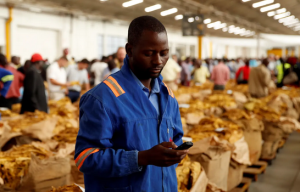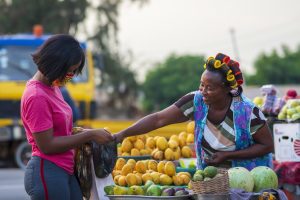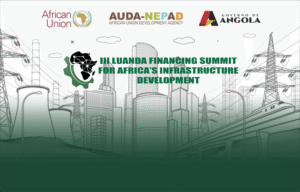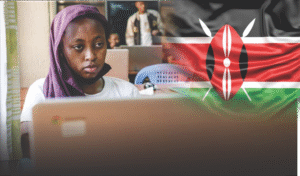Africa’s Balancing Economic Act: Growth, Jobs, nee for Inclusivity and the New Economics of Resilience

Across Sub-Saharan Africa, the numbers tell a story of cautious optimism. The region’s economy is projected to grow by more than 3.8% in 2025, according to recent World Bank data, signaling a modest rebound after years of volatility. Yet, behind the positive forecasts lies a sobering truth: job creation continues to lag behind the continent’s surging population, leaving millions of young Africans on the margins of the economic boom.


From Nigeria’s buzzing fintech corridors to Kenya’s pragmatic debt maneuvers, Africa’s economies are shifting gears, seeking stability in an era defined by global financial headwinds and domestic transformation. The trends reveal a continent adapting fast, with governments, investors, and everyday citizens all navigating a complex mix of progress and pressure.
In Nigeria, a revival of investor confidence in the fintech sector is emerging even as global startup funding slows. At the same time, agriculture is reaping the benefits of favorable weather, with cashew exports posting impressive earnings and offering relief to farming communities.
Meanwhile, Kenya is rewriting its debt strategy, converting dollar-denominated loans from China into yuan to lower interest costs and reduce exposure to currency swings—a bold signal of growing financial pragmatism. Further south, South Africa’s foreign reserves have surged to $67.865 billion, reflecting stronger fiscal conditions and improved trade performance.

Summary of regional and some countries specific updates:
- Sub-Saharan Africa:
The region’s economy is expected to expand by 8% in 2025, driven by agriculture, services, and improved fiscal management. However, the World Bank warns that job creation is not keeping pace with labor force growth, raising concerns about rising unemployment among the youth. - Nigeria:
The country’s fintech ecosystem—one of Africa’s most dynamic—has seen a rebound in local investment, with domestic venture capital firms leading funding rounds. Additionally, cashew earnings have increased significantly due to favorable weather, bolstering non-oil export revenue. - Kenya:
In a strategic shift, Kenya is converting Chinese loans from U.S. dollars to yuan to reduce interest payments and stabilize its debt profile, a move seen as part of broader efforts to manage foreign exposure. - South Africa:
The country’s net foreign reserves rose to $67.865 billion in September 2025, signaling improved fiscal stability and stronger commodity-driven performance. - Rwanda:
Rwanda marked a milestone with its first export of tungsten concentrate to the United States, highlighting Africa’s growing role in the global critical minerals supply chain. - Across Africa:
Local venture capital firms are increasingly taking the lead in startup funding, signaling stronger domestic confidence in the continent’s innovation landscape. The Africa Finance Corporation (AFC) has maintained its A3 credit rating for over a decade, underscoring institutional stability amid broader market challenges.


From the shores of West Africa to the savannahs of East Africa, nations are showing both promise and pressure. The region’s growth is powered by strong agricultural performance, a recovering services sector and the gradual easing of inflationary shocks. Yet the economic expansion remains a headline figure that doesn’t always translate to life-changing outcomes for ordinary families.
Amid this dynamism, some institutions continue to project stability. The Africa Finance Corporation (AFC), headquartered in Lagos, has retained its A3 long-term credit rating for over a decade. This is a testament to prudent governance and investor trust. Its steady performance underscores a growing maturity in Africa’s financial ecosystem, where long-term stability is beginning to rival short-term gains.
Still, challenges persist. High inflation across several countries continues to erode consumer confidence, while governments face pressure to balance austerity with social spending. The mismatch between growth and employment remains the continent’s biggest economic fault line.
Implication of the human cost to many African families, makes the economic story deeply individualistic. In the suburbs of Accra-Ghana, small business owner like Lydia Osei counts the rising cost of flour and fuel as she adjusts her bakery’s prices for the third time this year. “Growth means nothing,” she says, “if ordinary people can’t afford to live”. Her words echo across a continent caught between macroeconomic progress and microeconomic pain. The tension between optimism and reality defines the African narrative of 2025: a story of ambition, adaptation, and unfinished business.
![]()


As policymakers gather in African Economic Forum, their message clarifies that growth alone won’t be enough to secure the continent’s future; leaders must convert that growth into jobs, inclusivity and resilience.
However, Africa’s numbers are improving. Its entrepreneurs are innovating. Its institutions are holding steady. But the human dimension, which includes the family trying to make ends meet, the graduate seeking her first job, the farmer betting on the weather, remains the true measure of progress.
The question that looms over 2025 is not whether Africa can grow, but whether that growth can finally work for everyone. Though, despite encouraging signs, inflation remains a major concern across several economies, eroding consumer confidence and limiting purchasing power. As the continent’s population continues to grow rapidly, the race is onto ensuring that economic expansion translates into inclusive prosperity.






